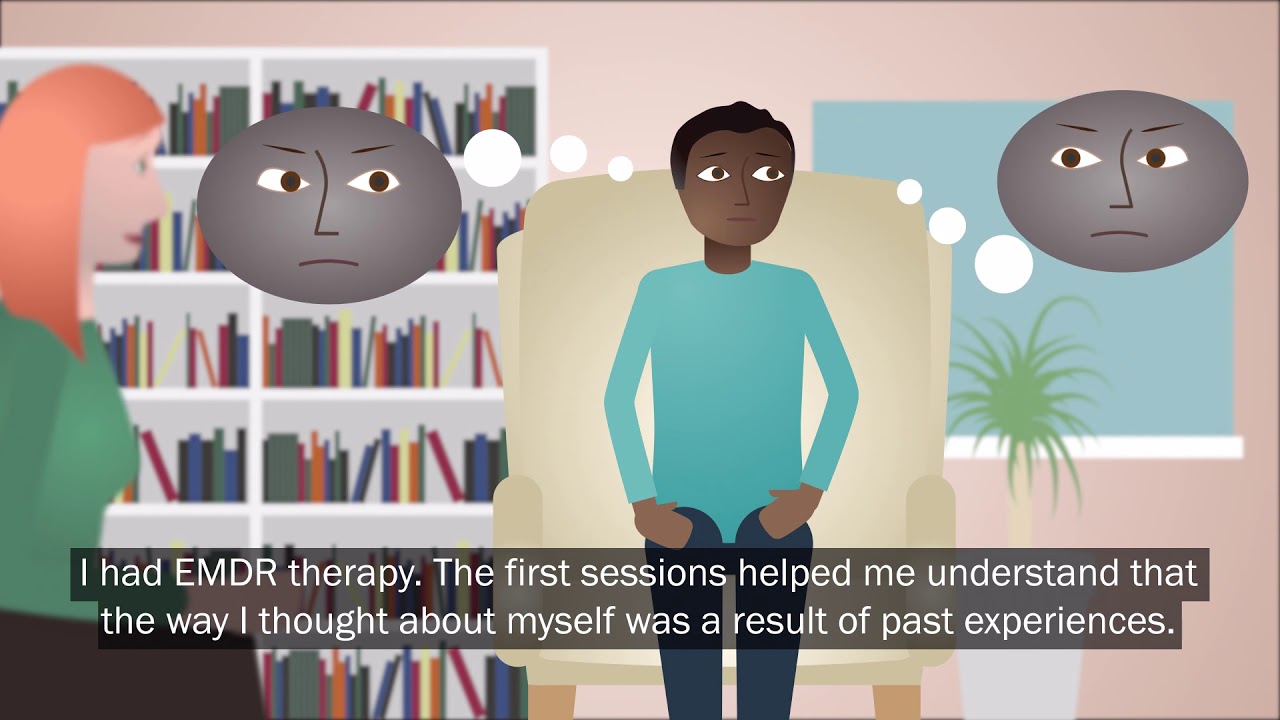Eye Movement Desensitization and Reprocessing (EMDR)

When EMDR was first developed in 1987, it was hailed as the most important method to emerge in psychotherapy in decades. In the years since EMDR has successfully treated psychological problems for millions of sufferers worldwide.
EMDR is a structured therapy that encourages the client to focus briefly on the trauma memory while simultaneously experiencing bilateral stimulation (typically eye movements), which is associated with a reduction in the vividness and emotion associated with the trauma memories. EMDR is an extensively researched, effective psychotherapy method proven to help people recover from trauma and PTSD symptoms. Ongoing research supports positive clinical outcomes showing EMDR as a helpful treatment for disorders such as anxiety, depression, OCD, chronic pain, addictions, and other distressing life experiences (Maxfield, 2019). EMDR has even found superior to Prozac (Fluoxetine) in trauma treatment (Van der Kolk et al., 2007). Shapiro and Forrest (2016) shared that more than 7 million people have been treated successfully by 110,000 therapists in 130 countries since its inception.

Animation explaining EMDR and trauma
How is EMDR different from other therapies?
EMDR does not require talking in detail about the distressing issue or completing homework between sessions. EMDR allows the brain to resume its natural healing process, this being explained in the underpinning theoretical framework call the Adaptive Information Processing Model (AIP). EMDR is designed to resolve unprocessed traumatic memories in the brain and body. For many clients EMDR can be completed in fewer sessions than other psychotherapies.
How does EMDR work?
EMDR is underpinned by the Adaptive Information Processing (AIP) model, a theory about how your brain stores memories. This theory, developed by Francine Shapiro, PhD, who also developed EMDR, recognises that your brain stores normal and traumatic memories differently. During "non-overwhelming events", your brain stores memories spontaneously and intuitively. It networks them, so they connect to other other experiences in your life. During disturbing or upsetting events, that networking can sometimes get interrupted. This may be due to the extreme nature of the event, or may relate to how this event conflicts with what you believe to be true about yourself, others, the world in general or your future. During these upsetting events the brain can go “offline” and there’s a disconnect between what you experience (feel, hear, see) and what your brain stores in memory through language. Over time, due to the nature of these "unprocessed memories", you may intentionally or unintentionally work hard to distance yourself from these recollections and as such they can get "frozen in time", and consequently retain a nowness quality. For example: "I know it happened a long time ago but when the memory comes back to my attention it can feel like it is happening again".
Trauma is like a wound that your brain hasn’t been allowed to heal. Because it didn’t have the chance to heal, your brain didn’t receive the message that the danger is over. Newer experiences can link up to earlier trauma experiences and reinforce a negative experience over and over again. That disrupts the links between your senses and memories. It also acts as an injury to your mind. And just like your body is sensitive to pain from an injury, your mind has a higher sensitivity to things you saw, heard, smelled or felt during a trauma-related event. This happens not only with events you can remember, but also with suppressed memories. Much like how you learn not to touch a hot stove because it burns your hand, your mind tries to suppress memories to avoid accessing them because they’re painful or upsetting. However, the suppression isn’t perfect, meaning the “injury” can still cause negative symptoms, emotions and behaviours.
Triggers
Sights, sounds and smells with a connection or similarity to a trauma event will “trigger” those improperly stored memories. Unlike other memories, these can cause overwhelming feelings of fear, anger, self-disgust or sadness. An example of this is a post-traumatic stress disorder (PTSD) flashback, where improper storage and networking causes your mind to access those memories in a way that’s uncontrolled, distorted and overpowering. That’s why people with a history of flashbacks describe feeling as if they were reliving a disturbing event over and over again. The past becomes the present.
Reprocessing and Repair
When you undergo EMDR, you access memories of a trauma event in very specific ways. Combined with eye movements and guided instructions, accessing those memories helps you reprocess what you remember from the negative event. That reprocessing helps “repair” the mental injury from that memory. Remembering what happened to you will no longer feel like reliving it, and the related feelings will be much more manageable. You may also attach a very different meaning to the event. For example: "That 'self' defining moment that always made me believe that I wasn't good enough is no longer powerful. I realise I am good enough and I can start to make choices based on that view".
How does EMDR affect the brain?
Our brains have a natural way to recover from traumatic memories and events. This process involves communication between the amygdala (the alarm signal for stressful events), the hippocampus (which assists with learning, including memories about safety and danger), and the prefrontal cortex (which analyses and controls behaviour and emotion). While many times traumatic experiences can be managed and resolved spontaneously, some may not be processed without help. Stress responses are part of our natural fight, flight, or freeze instincts. When distress from a disturbing event remains, the upsetting images, thoughts, and emotions may create an overwhelming feeling of being back in that moment, or of being “frozen in time.” EMDR helps the brain process these memories, and allows normal healing to resume. The experience is still remembered, but the fight, flight, or freeze response from the original event is resolved.
Experiencing EMDR Therapy
After the therapist and client agree that EMDR is a good fit, the client will work through the eight phases of EMDR therapy with their therapist. Initial phases involve history taking, making sense of your difficulties, and starting to prepare for looking at the memories directly. Progress to "Phase 4 Desensitisation" (when you bring the memory back to mind) only happens when both you and the therapist feel confident that this can be done in a safe and contained manner. Attention will be given to a negative image, belief, emotion, and body sensation related to this event, and then to a positive belief that would indicate the issue was resolved. A typical EMDR therapy session lasts from 60-90 minutes. EMDR may be used within a standard talking therapy as an adjunctive therapy, or as a treatment all by itself.
What Can EMDR Treat and Why Is It Helpful?
EMDR is most widely associated with the treatment of PTSD, but in recent years, it has been used to effectively treat other conditions such as anxiety, panic attacks, grief, substance abuse and addiction, pain, and depression. The treatment is helpful in a number of ways that include reduced emotional distress triggered by memories and less “homework” for clients.
Endorsement
EMDR therapy is endorsed by the NICE (National Institute for Health and Care Excellence); the World Health Organisation; The International Society for Traumatic Stress Studies; the NHS (in the UK); and many other bodies.



